Planet Coaster to Many People Using Chief Beef
C harles Darwin in one case mused on the impacts that predators could have on the landscapes around them. In item, he wondered – in On the Origin of Species – how neighbourhood cats might touch the abundance of flowers in the fields about his house at Downe in Kent. He ended the animals' potential to alter local flora was considerable.
A robust cat population, he argued, would mean that local mouse numbers would be depression and that, in plough, would mean there would loftier numbers of bumble bees – considering mice destroy bee combs and nests. And as bees pollinate clover, Darwin argued that this cascade of oscillating species numbers would upshot in there being more clover in fields in areas where in that location are lots of feline pets. Cats mean clover, in short.
Information technology was an idea that took the fancy of Darwin's primary disciple, the biologist Thomas Huxley who extended this cat-clover cascade in 1892 to include old maids. They kept cats, Huxley argued, and those pets would ensure neighbouring fields would be depression in mice, loftier in bees and rich in clover.
And that in turn would have powerful consequences for the British Empire, Huxley added. Cattle graze on clover and cattle means beef. Thus old maids would provide the perfect setting for ensuring enough of clover and therefore salubrious cattle and good roast beef to feed our troops and thus ensure the prosperity of the British Empire. One-time maids hateful armed services might, in short.
Huxley was virtually certainly beingness facetious in outlining his maids‑to-empire chain. Yet, the concept of trophic cascades – as these ladders of interacting predator and prey populations are at present known – is recognised today as being a powerful and important forcefulness in shaping the natural history of our planet. More to the point, as man activities impact more and more on wildlife, we are changing trophic cascades with profound and unexpected consequences.
This view of nature – looking down from the top – contrasts with previous attempts to understand nutrient chains from changes that bear upon their lesser rungs to see how animals and predators at higher levels are affected. An example of this approach is provided by scientists who study how reductions in Chill bounding main ice might reduce levels of algae (which forms on the underside of ocean ice) and which might so touch on the creatures that consume alga: the plankton, fish and seals further upward the food concatenation.
Acme-down forcing – or trophic cascades – looks at the problem in the reverse direction, with a perfect example being provided by the work of James Estes, an American marine biologist who has studied wildlife in the due north Pacific Ocean for the past 45 years and has revealed the astonishing manner in which terrestrial and sea predators can change state and marine environments. This summit-down flick – with predators influencing the health of plants – is depicted in enthralling detail in his newly published Serendipity: An Ecologist's Quest to Understand Nature (University of California Press).
Estes has spent most of his working life in the Aleutian Islands, which stretch across the Due north Pacific Body of water from Alaska to the coast of Kamchatka in eastern Russia. "No identify in the modern earth is much wilder or more remote than the Aleutians," he says.
This isolation has not put the islands beyond the harmful influence of humans, however. Every bit explorers opened up the far north two centuries ago, hunters pushed deeper into the Aleutians in pursuit of the pelts of the body of water otters that thrived there in their hundreds of thousands. A member of the weasel family, the sea otter (Enhydra lutris) keeps warm in the h2o because it possesses the densest fur in the animal kingdom – about 850,000 to a million hairs per square inch. This insulates it from the cold.
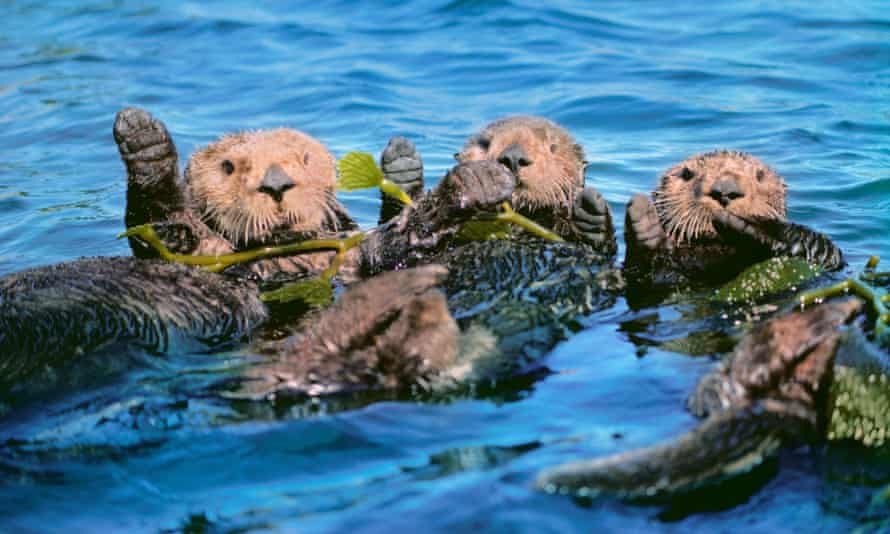
Notwithstanding, the sea otter's thick, rich pelt besides fabricated information technology a major target for hunters who, past the 1900s, had brought the animal close to extinction. "Only a dozen or so small colonies survived," Estes tells united states of america. In the end, an international ban on sea otter hunting was imposed, saving the animal from complete eradication.
Since and so, the sea otter has become an important affiche species for the ecology motion: a lovable, cuddly bounding main mammal that was saved from extinction thanks to international action. They are the teddy bears of the oceans, as i commentator has described them. Filmed as they float on their backs, bully open up ocean urchins, crabs, abalones and other shellfish with flat stones before eating them, the brute is certainly an endearing sight.
Only this abiding culinary activity masks a serious issue for the bounding main otter. An adult beast needs to consume vast amounts of food to survive, about a quarter of its own body weight – up to 11kg – every 24-hour interval, hence all that shell crunching and munching.
The question that intrigued Estes when he began his marine studies in the Aleutians in the 1970s was straightforward: given its voracious appetite for urchins, crabs and the like, what was the ecological consequence of that calamitous drib in sea otters numbers last century? To detect an answer, he began surveying ocean floors around islands where ocean otters had survived and others where they had disappeared and had all the same to exist reintroduced.
What Estes establish was striking: around islands that at present lacked sea otters, sea urchins – their main casualty – had increased in size and in numbers with devastating consequences. The forests of kelp that once grew at that place in profusion had disappeared. Instead huge urchins littered the arid bounding main flooring, having consumed every kelp plant in sight.
Past contrast, near islands where sea otters survived or had been reintroduced, kelp flourished. The discovery was important given the nourishment kelp'due south underwater forests provide for fish and other sea animals. "Kelp forests, with their loftier biomass and extreme productivity are key controlling elements of coast ecosystems," says Estes.
Everywhere Estes looked he found the same moving picture. Islands with sea otters had salubrious kelp forests while otter-less islands had arid sea floors littered with sea urchins only no kelp. In most eradicating sea otters, humans had disrupted a critical trophic pour: high sea otter numbers that mean depression sea urchin populations that mean salubrious kelp forests. As Estes puts it: "Body of water otters are conspicuously more than 'just some other brick in the wall'."
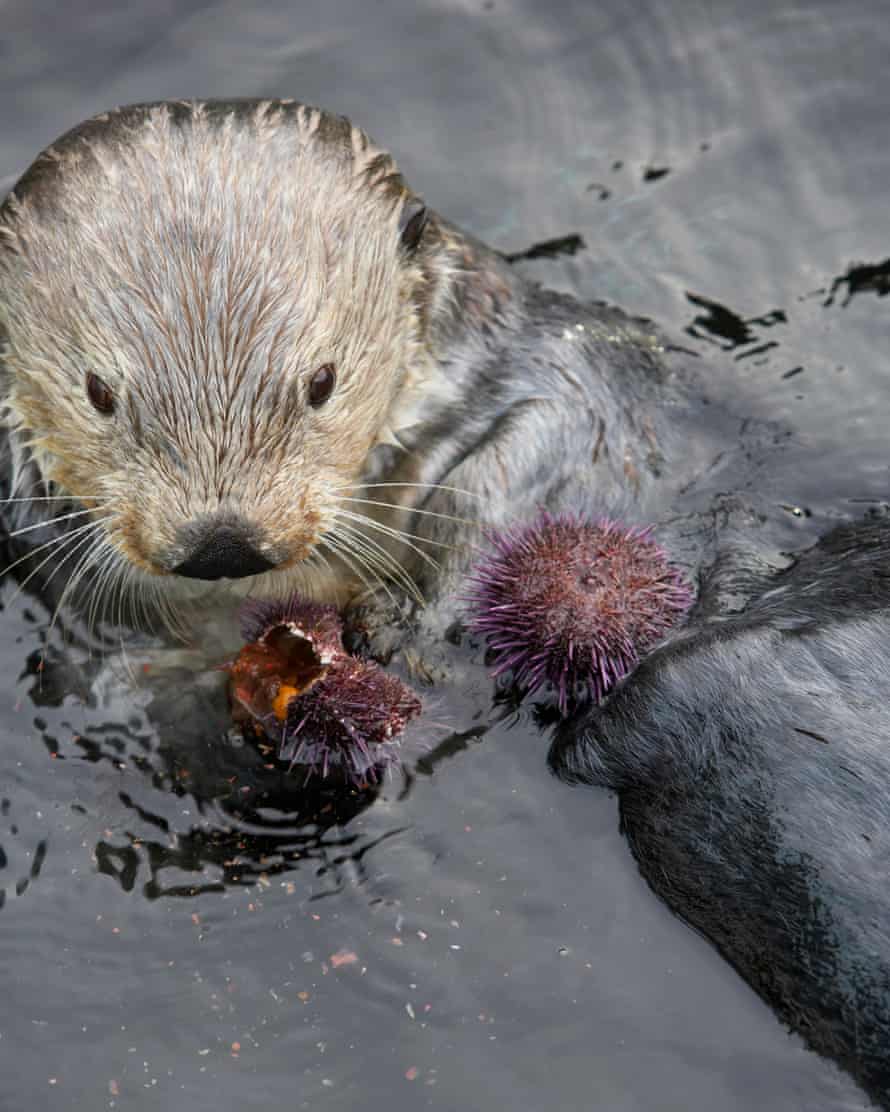
In fact, they are now recognised as being a keystone species, whose position in food chains is crucial in maintaining the ecological wellness of an area. They non only ensure the health of kelp forests just touch many other local species, as Estes'southward investigations have since revealed. Fish thrive in kelp forests, as do mussel beds, for instance.
Just most of all, those rich kelp forests – enriched by sea otter activeness – play a key office in maintaining global environmental health. Levels of carbon dioxide in the atmosphere are rising in the sea too as in the temper, and it is increasingly being absorbed by the sea too, making information technology more acidic and harmful to many species. But Estes has calculated that healthy kelp forests have the capacity to absorb billions of kilograms of carbon.
"Our results were centre-opening," he states. "The departure in annual absorption of atmospheric carbon from kelp photosynthesis betwixt a globe with and a globe without sea otters is somewhere betwixt 13 and 43 billion kg (xiii and 43 teragrams) of carbon."
Just almost every strand of ocean life that Estes looked at was touched in some way. "Every species in the littoral zone is influenced in ane mode or some other past the ecological effects of sea otters," he concludes. Thus, in removing sea otters from the due north Pacific, humanity – in its pursuit of fur for hats, gloves and coats – had not just grievously endangered the species, it had disrupted a large chunk of the marine surround in the Pacific and – for practiced measure – damaged our ability to deal with the touch of rising carbon dioxide levels on our planet.
Fortunately, the species had been saved from extinction in the nick of fourth dimension. At to the lowest degree that was how information technology seemed in the 80s and 90s. Then Estes fabricated a 2nd – disquieting – discovery. When he returned to the Aleutian islands of Adak and Amchitka – where sea otter numbers had been steadily ascension to the general good of the islands' kelp forests – he institute their populations were at present dwindling. "Something had inverse, simply I didn't know what," he says.
Estes looked elsewhere in the archipelago and found that some sites – such as Mollusk Lagoon on Adak – all the same possessed salubrious populations. Most others showed population declines, however. Overall, most forty,000 sea otters had disappeared over the course of a few years, he calculated. And merely as sea otter numbers dropped, so urchins reappeared on the sea floor and kelp forests began to disappear again.
Simply why were sea otters disappearing? Could some toxin or affliction be responsible? It seemed unlikely, given that otter losses were affecting islands that were thousands of miles apart and that some sites were completely unaffected by otter losses.
The reply was somewhen supplied by one of Estes'south colleagues, Tim Tinker, who realised 2 otters that he had recently tagged for futurity study had gone missing but subsequently a group of killer whales had passed Adak island. And then he recalled that previous losses of tagged otters had also occurred afterwards killer whales had been spotted in the region. Further observations confirmed the idea: killer whales had of a sudden taken a shine to sea otter flesh. Only in a few well-protected shallow trophy such as Mollusk Lagoon could the otters escape the attentions of their newfound predators.
Given that, prior to 1991, there had been no confirmed attacks by killer whales on sea otters, the discovery was puzzling. And then Estes looked at the history of other related species in the region and uncovered a startling picture. Just every bit bounding main otter populations started to plunge in the 90s, and so those of harbour and fur seals so sea lions had started to plummet in the 70s and 80s, all targeted by killer whales. But why?
The answer, Estes ended, lay with commercial whaling that was carried out in the region after the 2nd world war. "Earlier industrial whaling, killer whales were sustained by feeding on the immense biomass of nifty whales in the Due north Pacific and southern Bering Sea," says Estes. By the time commercial whaling was halted, there were virtually no bang-up whales left for killer whales to eat, and and then they expanded their diet starting time to seals and then to sea lions and finally to bounding main otters. At least that is Estes'due south statement. Not every scientist accepts it.
Nonetheless the theory is intriguing. The interest of killer whales means that a new noon predator seems to have appeared at the top of the otter-urchin-kelp trophic cascades and reveals, if nothing else, how this view of the food chain, from the top to the bottom, provides us with an illuminating new way at looking at nature and its tightly interwoven components. Equally the naturalist John Muir once remarked: "When we try to pick out annihilation by itself, we observe it hitched to everything else in the universe."
Other keystone species
Jaguar (keystone predator)

The jaguar is a ascendant predator, sitting on height of the nutrient concatenation and feeding on a diversity of big herbivores like deer, capybara and tapirs. If left unchecked, these prey species could devour almost of the plants in a habitat, causing disastrous knock-on effects and population crashes in birds, insects and mammals. It is therefore vital for the health of many tropical ecosystems that jaguars control herbivore numbers.
Prairie domestic dog (keystone modifier)
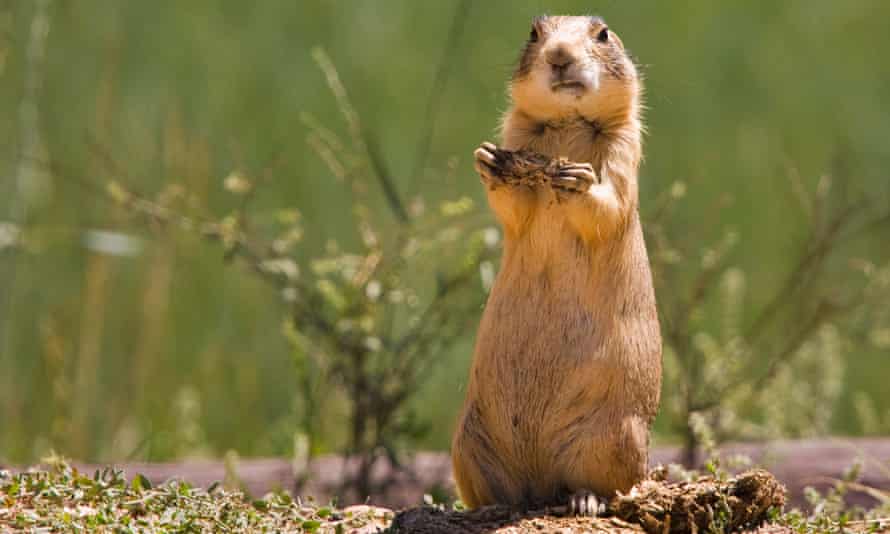
Prairie dogs are burrowing basis squirrels native to North American grasslands. They dig tunnels to avoid predators and the scorching summer heat, but their burrows also serve as prime nesting areas for many endangered bird species, and act as a natural irrigation arrangement, allowing rainwater deep into the disturbed soil to provide fertile growing areas for new plant life.
Hummingbird (keystone mutualist)

Hummingbird beaks have evolved aslope sure bloom groups, altering and mimicking each other's shape until no other animate being can drinkable nectar from or pollinate the plants. The birds are such voracious pollinators that a small rise in their numbers can lead to a population boom in their linked flower species. However, these species rely solely on hummingbirds for survival; if the birds perish, the flowers will follow.
Beaver (keystone modifier)
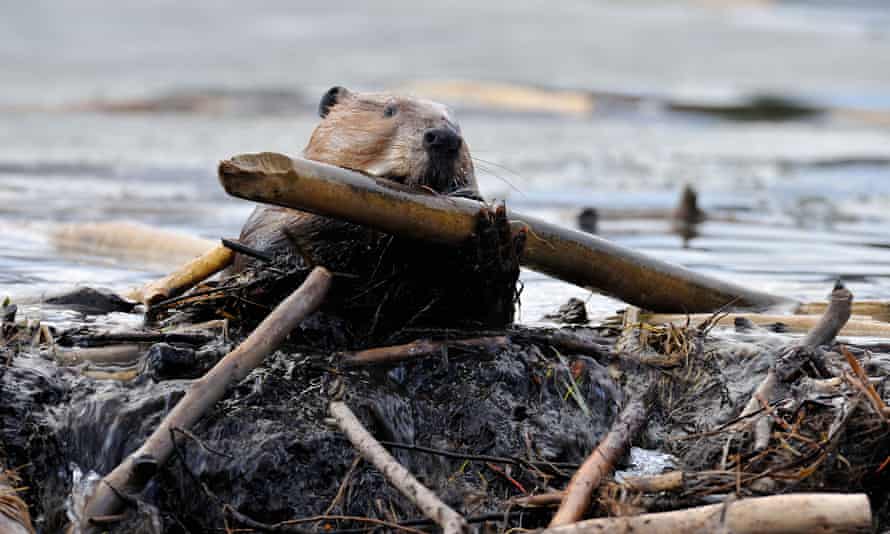
During the dark beavers work using mud, rock and timber to build spectacular dams. These create two distinct types of habitat: ponds upstream of the construction and downstream marshland. Beavers apply the ponds equally protection from wolves, bears and coyotes, but hundreds of North American species (many of which are endangered) owe their continued survival to the way beavers modify their surround.
Saguaro cactus (keystone host)
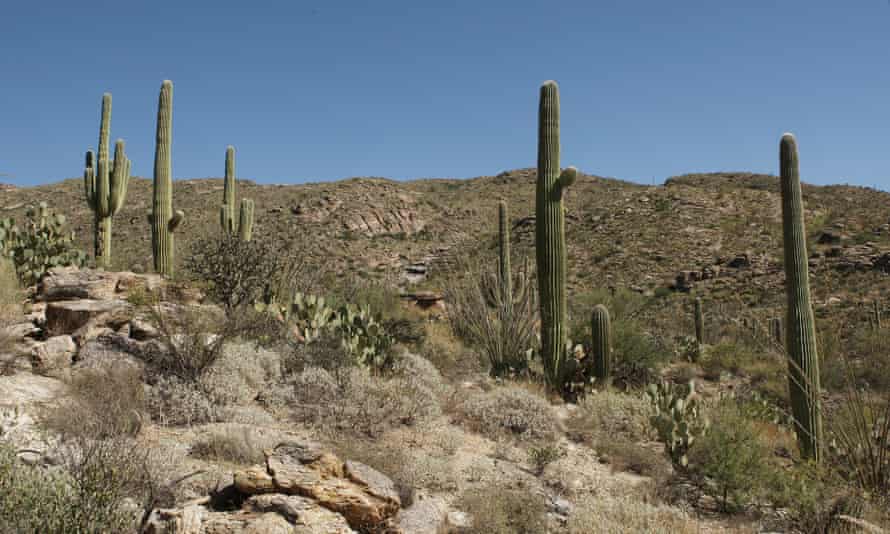
The saguaro is a giant cactus native to the Sonoran desert, bridging Fundamental and North America. The cacti stand up up to 60 anxiety alpine, 2 feet broad and contain vast amounts of water in an otherwise arid environment. This makes them an bonny home for many insects and birds species, all of which burrow inside or build nests on the cacti'southward branches and would be unable to survive in the desert without them.
Snowshoe hare (keystone prey)
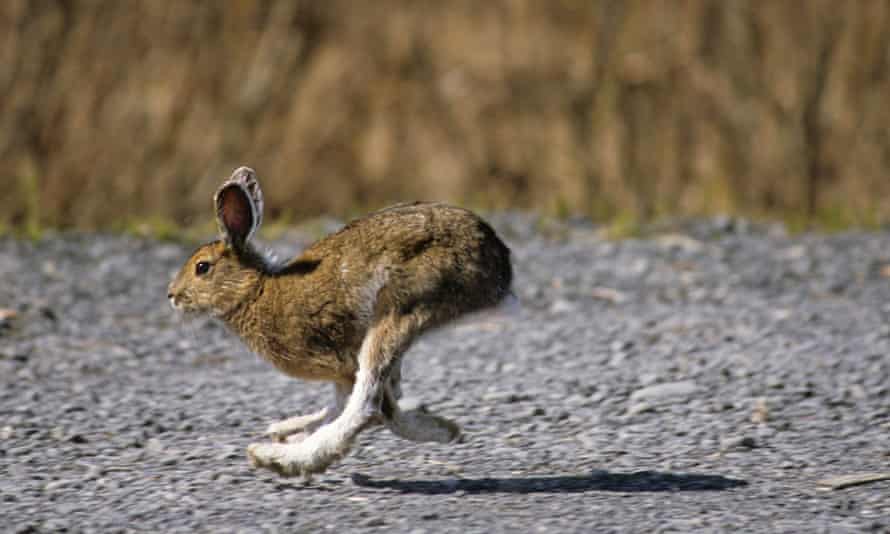
Snowshoe hares get their proper name considering of their large hind anxiety, which help them remain on top of deep snowfall. Being ane of the few small mammals that live to a higher place ground in arctic environments, they have many predators and must therefore brood at a rapid charge per unit to survive. These hares are a main food source for several species, supporting endangered populations of lynxes, bobcats, coyotes and mountain lions, among others. Volition Latter
Source: https://www.theguardian.com/environment/2016/jul/10/sea-otters-global-warming-trophic-cascades-food-chain-kelp
0 Response to "Planet Coaster to Many People Using Chief Beef"
Post a Comment